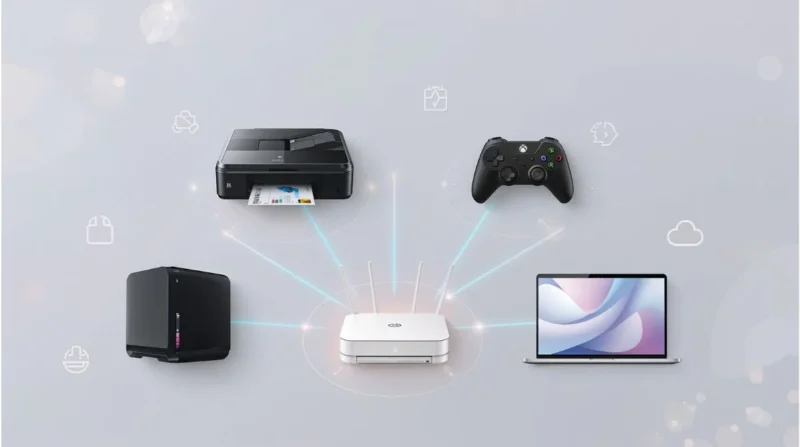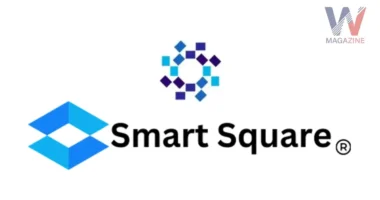Table of Contents
Imagine you buy a new printer or smart lamp, plug it in, and, magically, it just works on your home network. No fiddling with settings, no hunting for driver CDs, no port-forwarding in your router. That seamless experience comes from something called universal PnP, short for Plug and Play.
Universal PnP in Simple Terms
Universal PnP is a set of standards and rules (protocols) that let devices on your local network find each other and talk without you doing anything manually. Once a device becomes part of your Wi‑Fi or wired home network, PnP lets it:
- Get an IP address (like its address on the network).
- Send out a “hello” message so others know it’s there.
- Share what it can do, like printing or streaming.
- Let other devices use it, like your computer printing a document or your TV playing music.
It’s how your smartphone, printer, smart speakers, security cameras, and more just start working together. No apps or complicated settings needed.
How Universal PnP Works?
Universal PnP combines a number of standard network rules so devices can work smoothly:
Addressing (IP setup)
When a device joins the network, it asks for an IP via DHCP. If no DHCP server answers, the device picks one automatically (AutoIP).
Discovery via SSDP
The device broadcasts a message using SSDP (Simple Service Discovery Protocol) on UDP port 1900. Other devices listen for these messages.
Description (XML info exchange)
Devices then fetch a small XML file from the new device. It includes details like brand, features, and how to interact with it.
Control using SOAP
When you print, play music, or use a feature, the devices send commands via SOAP (XML-based messaging over HTTP).
Eventing (status updates)
If something changes, like ink runs low or a sensor detects motion, the device sends event notices using GENA, letting control points update in real time.
Presentation (optional web UI)
Some devices even include a web interface you can pull up on your phone or computer browser. In just minutes, a new device can join your network, announce its presence, share capabilities, and work without any manual settings from you.
Why PnP Matters in Daily Life?
Universal PnP is everywhere, invisible, but powerful. Here are a few real-life examples:
- Printing from any device: No more printer setup nightmares. Whenever you’re on the network, your PC or phone can just print.
- Smart home gear: Devices like IoT bulbs, thermostats, and smart locks connect automatically. You don’t need to configure each one.
- Gaming made easy: Your Xbox or computer can set up ports for multiplayer games, so you don’t need to tweak router settings.
- Watching media across devices: Stream music or videos from your phone toa speaker or TV with no setup hassle.
It saves time and frustration, especially for people who just want things to work without tech knowledge.
Benefits of Universal PnP
Universal PnP brings big advantages:
- Zero‑touch setup: You plug in and forget it.
- Cross-device help: Works across brands and languages.
- Fast networking: No manual port forwarding or IP assigning.
- Great for beginners: Even non‑techies can use it easily.
Risks You Should Know
However, universal PnP is not perfect:
- No built-in authentication: There’s often no password to join. Any device on your network can ask the router to open ports.
- Port forwarding without you knowing: Malware or compromised devices can punch holes in your firewall for attackers.
- Internet-accessible UPnP flaws: Some routers expose UPnP to the internet by mistake. That lets bad actors exploit it from outside.
- Bad implementations: Many cheap devices have weak or buggy UPnP code, making attacks easier.
Real-world misuse
Remember Mirai botnet? It hijacked many IoT devices to launch massive cyberattacks by using UPnP weaknesses.
Smart Ways to Stay Safe
Here’s how to enjoy universal PnP’s ease without risking security:
- Turn off UPnP on your router unless it’s absolutely needed.
- Update devices regularly, patch UPnP bugs and vulnerabilities.
- Check your router’s settings, ensure UPnP is local-only, not exposed to the internet.
- Use strong network passwords so only trusted devices can join.
- Monitor port forwarding, look for unknown entries in your router logs.
- Use a firewall that alerts you whenever a new port is opened.
Universal PnP in IoT and Smart Homes
Universal PnP is important for the Internet of Things. It lets sensors, cameras, bulbs, and hubs work together right out of the box. Even the UPnP standards group is working to add more security and cloud support.
Future of Universal PnP
PnP isn’t going anywhere; it just needs to get safer. The Open Connectivity Foundation (OCF) is modernizing its standards to support IoT and smart home use with stronger encryption and authentication.
Quick Recap & What You Should Do?
- Adopt devices with UPnP: Enjoy “plug and play” simplicity.
- Understand the risk: Know that convenience can open security doors.
- Configure smartly: Aim for local-only UPnP, and secure your router.
- Update & monitor: Keep firmware fresh and watch for odd network activity.
- Disable if unsure: If you’re not using UPnP features, turn it off.
Conclusion
Universal PnP brings real convenience. It lets your devices connect and communicate effortlessly. But that ease depends on trust. Without smart settings and monitoring, your network can become vulnerable. Follow best practices, keep things updated, use strong passwords, and disable UPnP if you don’t need it. That way, you keep the magic of plug-and-play without the risks.









